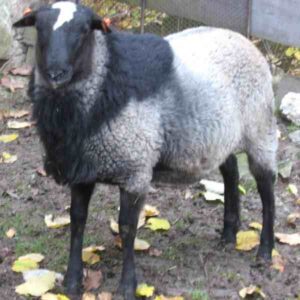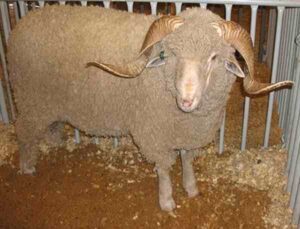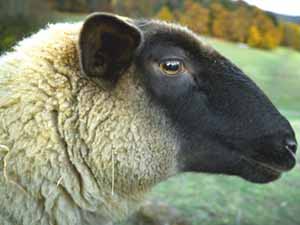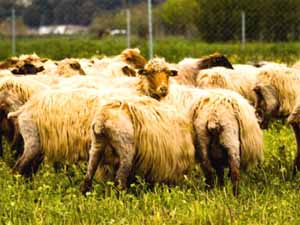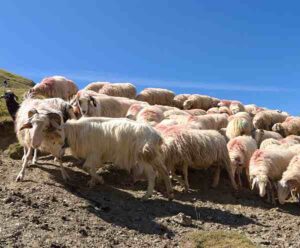The Icelandic sheep is a multi-purpose breed of domestic sheep which are used for meat, milk and also for wool production. As the name suggests, it is from Iceland, and it is one of the Northern European short-tailed sheep.
The breed exhibit a fluke-shaped, and naturally short tail. The breed has descended from the same stock as the Norwegian Spelsau, which was brought to Iceland by the fist settlers (Viking settlers) in the ninth and tenth century.
Through the centuries, very few attempts have been made for improving the Icelandic sheep. And the few attempts that were made, resulted in disasters brought on by diseases brought in by the new blood.
Genetically today this breed is the same as it was 1100 years ago. Possibly, it is the purest and oldest domesticated breed of sheep in the world currently. Read some more information about this breed below.
Icelandic Sheep Characteristics
The Icelandic sheep are medium sized animals, and are fine boned with open face, legs and udders.
Generally, they are short-legged and stocky. Their face and legs are free of wool. They have dual-coated fleece, and their fleece occurs in white and a variety of other colors.
Their common colors include a range of browns, blacks and grays. This breed has both polled and horned variety, but horned variety is most common.
Icelandic sheep are not particularly tall but broad and have an excellent conformation as a meat sheep breed.

Average live body weight of the mature Icelandic ewes is between 68 and 73 kg. And mature ram’s average live body weight vary from 90 to 100 kg. Photo and info from ansi.okstate.edu and Wikipedia.
Uses
Icelandic sheep are multi-purpose animals. They are used for meat, milk and wool production.
Special Notes
The Icelandic sheep are extremely hardy animals. They are very cold hardy and usually left unshorn for the winter. The ewes are excellent mothers with a lambing percentage of 175 to 220 percent.
Multiple births are very common in the Icelandic ewes. A gene also exists in the breed called the Þoka gene, and ewes carrying it have been known to give birth to triplets, quadruplets, quintuplets, and even sextuplets on occasion.
The ewes are seasonal breeders and come into estrus around October, and the breeding season can last up to four months. The rams grow and reach maturity fast. They can be mature and start breeding as early as 5 months.
The Icelandic sheep are known to be not a docile breed. They are very alert animals and fast on their feet. Their flocking instinct is poor, and most of them are very individualistic. They are very good browsers and usually enjoy eating brush and wild grasses.
Today the breed is highly valued for both milk and meat production. And they are also very good for wool production. However, review full breed profile of the Icelandic sheep in the following chart.
| Breed Name | Icelandic |
| Other Name | Icelandic: íslenska sauðkindin |
| Breed Purpose | Meat, milk and wool |
| Special Notes | Very hardy and strong animals, well suited to their local climates, extremely cold hardy, ewes are excellent mothers, lambing percentage is around 175 to 220 percent, multiple births are very common, ewes carrying Poka gene have been known to give birth to triplets, quadruplets, quintuplets, and even sextuplets on occasion, ewes are seasonal breeders, ewes come into estrus around October, their breeding season can last up to 4 months, rams grow and reach maturity fast, not a docile breed, very alert animals, fast on their feet, poor flocking instinct, most of the animals are very individualistic, very good browsers, generally enjoy eating brush and wild grasses, good for meat, good for milk, good for wool production |
| Breed Size | Medium |
| Weight | Rams weight between 90 and 100 kg, and mature ewes body weight vary from 68 to 73 kg |
| Horns | Yes or no |
| Climate Tolerance | Native climates |
| Color | Many |
| Rarity | Common |
| Country/Place of Origin | Iceland |

